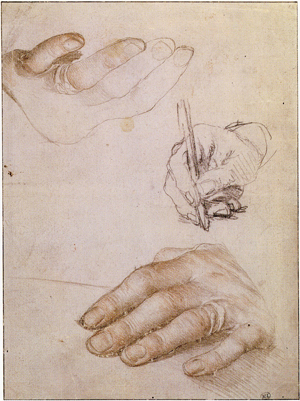Elegant Writing Pen With A Nib

There's all kinds of advice across the web about when to use which app for each small thing that needs doing. But the advocates for using paper to complete certain tasks are not so loud (you can't hear them typing, among other things). Yet a Forrester Research survey of business professionals found that 87 percent of them supplement gadgets with paper productivity, and 47 percent thought their personal and company efficiency would improve with better note-taking. The survey might have been biased, since it was sponsored by the makers of the Livescribe smart pen, but you can't help but think it touches on a need to refamiliarize ourselves with ink and thinly sliced wood pulp.
Paper, but more specifically handwriting, will likely always be with us, and that's a good thing. It's a smoother path from your brain to the printed word, it saves you from task-switching overload, and it possibly makes the best to-do list.
So here's a chance for advocates of the handwritten way to make their best pitch for the best uses of dead trees.
Lightning-Strike Ideas
Carrying a notebook with you at all times is cheap and easy. You can catch those startlingly crisp ideas about a project that pop up in the auto shop waiting room, the airport, a bookstore, or wherever. Marina Martin, business efficiency consultant and self-described "quintessential Type-A Personality," says that even the most fluid, thoughtful electronics introduce too much friction into the process of thinking, writing down, then thinking further out.
"We're more likely to find an electronic device, open our favorite word processor, and fiddle with a margin and font size before committing a single word to the page," Martin wrote in an email. "Automatic spellcheck and word correction can slow the process further and cause you to lose your train of thought."
By committing your thought to paper, you're also doing more to lock it into place. Virginia Berninger, professor of educational psychology at the University of Washington, has the brain scans to prove it. Berninger told the Wall Street Journal in Oct. 2010 that as your hand executes each stroke of each letter, it activates a much larger portion of the brain's thinking, language, and "working memory" regions than typing, which whisks your attention along at a more letters-and-words pace.
A 2008 study, also cited in the Journal, asked adults distinguish between characters in another language and their trick mirror images. Those who had a chance to write out the original characters with pen and paper had "stronger and longer-lasting recognition" of the proper orientation than those who found the character on a keyboard.
Better To-Do Lists
The role of paper is "changing from information recording and archiving, to a more temporary role of containing transient information," says Jenny Englert, senior cognitive engineer at Xerox, in summarizing some of the research her firm is doing on the future of work and work practice ethnography. In other words, paper still makes for a great to-do list (which, as you've just learned, is easier to remember).
A paper to-do list is easier to edit wherever you are, and can contain sketches and special characters without requiring you to learn new software or keyboard tricks. Paper also "provides a visual cue that persists spatially (it doesn't disappear behind a computer screen)," Englert writes, and can be left right where you need to be reminded of it.
Martin notes, too, that it's harder, psychologically and physically, to let an item grow stale on a to-do list, especially if you're getting other items done around it.
"When it comes time to rewrite a messy or mostly done list, merely facing the idea of writing out the same task for the fifth time can be enough motivation for me to do it right then, so it never has to be written down again," she says.
Jobs and Events That Seem Overwhelming
Dr. Sian Beilock's book Choke: What the Secrets of the Brain Reveal About Getting it Right When You Have To, explores the many, many ways that the most talented people can set themselves up for huge failures at crucial moments. One thing that reliably helped very smart students with major test anxiety was writing about their anxieties to "off-load" them. And that was very specifically noted as "writing." In general, ask a whole bunch of geeks where they write down their thoughts and feelings, and you might be surprised at how many choose pen and paper.
As another Fast Company blogger pointed out, critics and researchers see paper as a medium that allows for deeper thought and focus. By its nature, it's a single page that you pick up and give a key position to, and you can see exactly how much you have done with it. On another level, paper lacks hyperlinks, search boxes, and notifications, the kinds of context switches author Nicholas Carr believes have rewired and distracted our brains.
Of course, there are lots of ways to digitize your paper thoughts once you've nailed them down, if you'd like–Livescribe, Evernote, and tools like the ScanSnap among them. Handwriting and paper's biggest selling points may be that you don't have to "switch" or "transition" anything at all. They're always there, and will be for a long time.
Get More Work Smart.
Elegant Writing Pen With A Nib
Source: https://www.fastcompany.com/1798782/pen-mightier-phone-case-writing-things-out
Posted by: taylorshantoote1978.blogspot.com

0 Response to "Elegant Writing Pen With A Nib"
Post a Comment